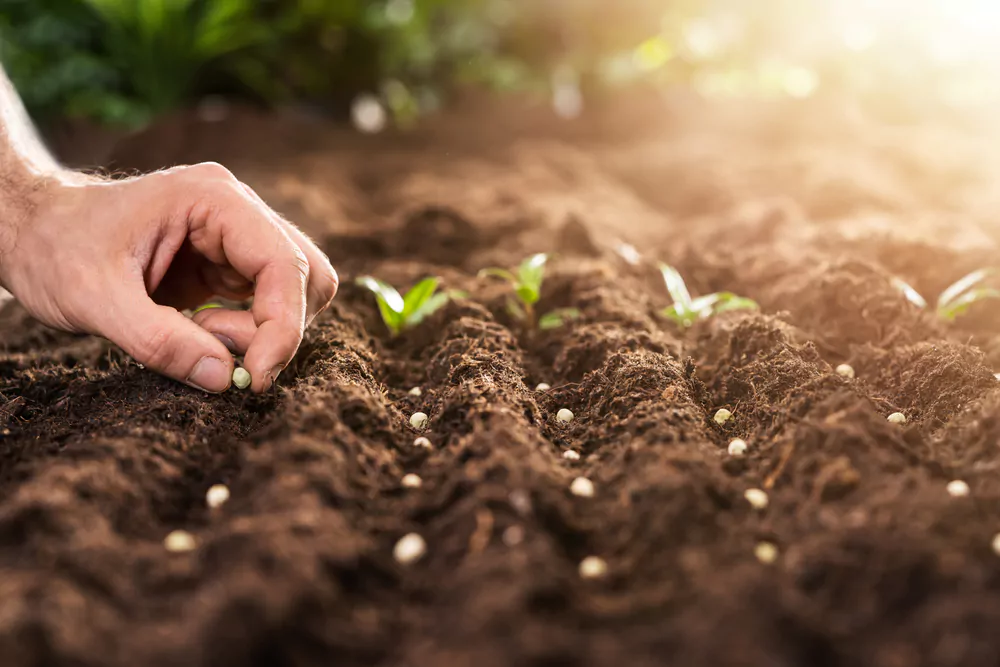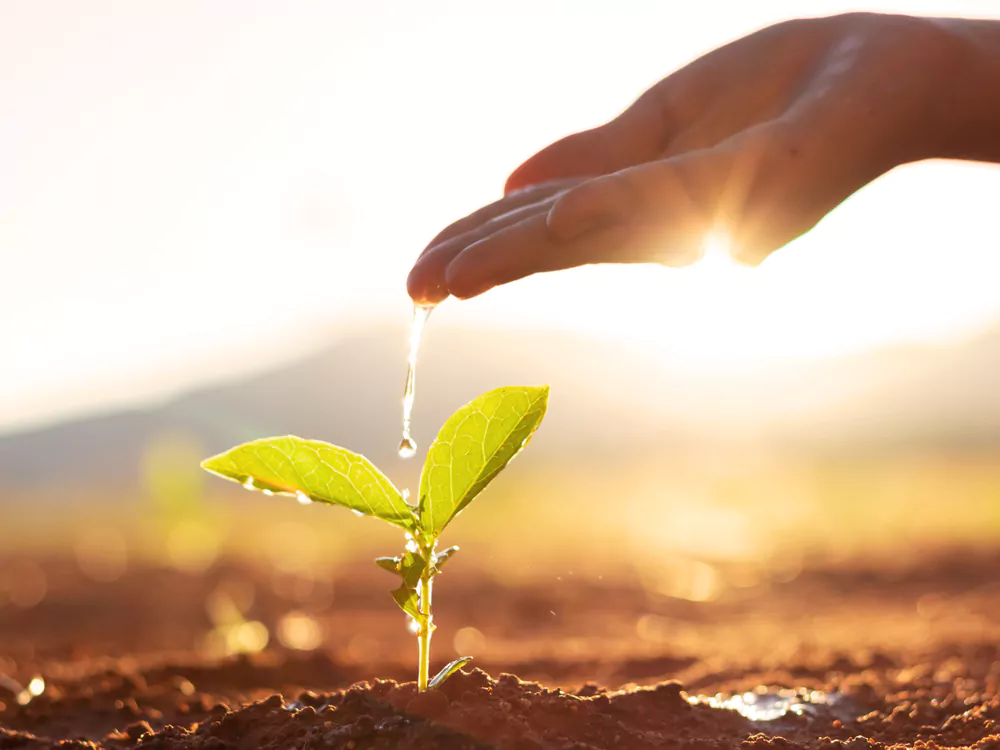How to Grow Plant from Seeds? A Comprehensive Guide

Growing plants from seeds is an incredibly rewarding experience that allows you to see the entire life cycle of a plant, from its humble beginnings as a tiny seed to its mature, full-grown form. Whether you’re an experienced gardener or just starting out, growing plants from seeds is an excellent way to connect with nature and learn about the intricate processes that make up the world around us. In this blog, we’ll walk you through the steps to successfully grow plant from seeds, so that you can enjoy the beauty and benefits of gardening firsthand.
1 Choose Your Seeds
The first step in growing plants from seeds is to choose the right seeds for your needs. If you’re a beginner, it’s a good idea to start with seeds that are easy to grow and require minimal maintenance. Some of the easiest seeds to grow include sunflowers, marigolds, zinnias, and sweet peas. You can also opt for herbs like basil or mint or vegetables like tomatoes or cucumbers if you’re looking for something edible.
When choosing your seeds, it’s important to consider the climate and growing conditions in your area. Different plants thrive in different environments, so make sure to choose seeds that are suitable for your location. You can also choose seeds based on your personal preferences, such as colour, size, or scent.
2 Prepare Your Soil
Once you’ve chosen your seeds, it’s time to prepare your soil. The quality of your soil is crucial to the success of your plants, so make sure to choose high-quality soil that is well-draining and nutrient-rich. You can also mix in some compost or organic matter to improve the soil’s fertility and water retention.
Before planting your seeds, make sure to loosen the soil and remove any weeds or debris. You can also add a layer of mulch on top of the soil to help retain moisture and prevent weeds from growing.
3 Plant Your Seeds
Now that your soil is ready, it’s time to plant your seeds. The depth and spacing of your seeds will depend on the type of plant you’re growing, so make sure to read the instructions on the seed packet carefully.
As a general rule, small seeds should be planted shallowly, while larger seeds should be planted deeper. You can also use a seed-starting tray or pot to help keep your seeds organized and provide optimal growing conditions.
After planting your seeds, gently water the soil to ensure that it is evenly moist. You can also cover the seeds with a layer of plastic wrap or a seed-starting dome to help retain moisture and promote germination.
4 Provide Optimal Growing Conditions

Once your seeds have germinated, it’s important to provide optimal growing conditions to ensure that they thrive. This includes providing adequate sunlight, water, and nutrients.
Most plants require at least 6-8 hours of sunlight per day, so make sure to place them in a sunny location or use grow lights if necessary. You should also water your plants regularly, making sure to avoid overwatering or underwatering.
In terms of nutrients, you can fertilize your plants with a balanced fertilizer every few weeks to promote healthy growth. You can also supplement with additional nutrients as needed based on your plant’s specific requirements.
5 Transplant Your Seedlings
As your plants grow, they will eventually outgrow their seed-starting trays or pots and need to be transplanted to larger containers or outdoor gardens. This is an important step in the growing process, as it allows your plants to develop strong root systems and access the nutrients and space they need to thrive.
When transplanting your seedlings, make sure to handle them gently and avoid damaging the roots. You should also choose a container or garden location that is suitable for the size and growing requirements of your plant.
If you’re transplanting your seedlings outdoors, make sure to choose a location that receives adequate sunlight and has well-draining soil. You should also acclimate your plants to the outdoor environment by gradually exposing them to the sun and wind over a period of several days.
6 Monitor Your Plants

As your plants continue to grow, it’s important to monitor their progress and make adjustments as needed. This includes checking for signs of pests or diseases, adjusting watering and fertilization schedules, and providing support structures for plants that require them.
In addition, you may need to prune your plants to promote healthy growth and prevent overcrowding. Pruning involves removing dead or damaged leaves and stems, as well as thinning out dense foliage to allow more light and air to reach the plant.
7 Harvest Your Plants
The final step in growing plants from seeds is to harvest your plants once they reach maturity. This is the most rewarding part of the process, as it allows you to enjoy the fruits of your labor and reap the benefits of your hard work.
To harvest your plants, simply pick the ripe fruits or vegetables, or cut the stems of flowers at the base. You can also collect seeds from your plants to use for future planting.
8 Tips for Success
To ensure success when growing plants from seeds, keep the following tips in mind:
- Start with high-quality seeds: Choose seeds from reputable sources to ensure that they are viable and disease-free.
- Use a seed-starting tray or pot: This will help keep your seeds organized and provide optimal growing conditions.
- Provide adequate sunlight: Most plants require at least 6-8 hours of sunlight per day, so make sure to place them in a sunny location or use grow lights if necessary.
- Water your plants regularly: Make sure to water your plants regularly, making sure to avoid overwatering or underwatering.
- Use a balanced fertilizer: Fertilize your plants with a balanced fertilizer every few weeks to promote healthy growth.
- Monitor your plants: Check for signs of pests or diseases, and make adjustments to your watering and fertilization schedules as needed.
- Harvest your plants: Enjoy the fruits of your labour by harvesting your plants once they reach maturity.
9 Wrapping up
Growing plants from seeds is a wonderful way to connect with nature and learn about the intricacies of the plant life cycle. By following these steps, you can successfully grow plants from seeds and enjoy the beauty and benefits of gardening firsthand.
Remember to choose the right seeds for your needs, prepare your soil properly, provide optimal growing conditions, transplant your seedlings when necessary, monitor your plants’ progress, and harvest your plants once they reach maturity.
Whether you’re looking to grow flowers, herbs, or vegetables, growing plants from seeds is a rewarding and fulfilling experience that can bring joy and beauty to your life for years to come. Also, check out our similar blog on how to grow herb plants indoors for your garden. Happy planting!
Community Q&A
About This Article
Hardik Jethva is an experienced author of the BestCheck family. Working from scratch, he has developed an amazing interest in testing and writing about different products in a transparent manner. His writing skills got more audience for BestCheck. Apart from his professional life, Hardik has his eyes on travelling, meditation, eating healthy food, socializing with people, and car rides.
This article has been viewed 514 times.



